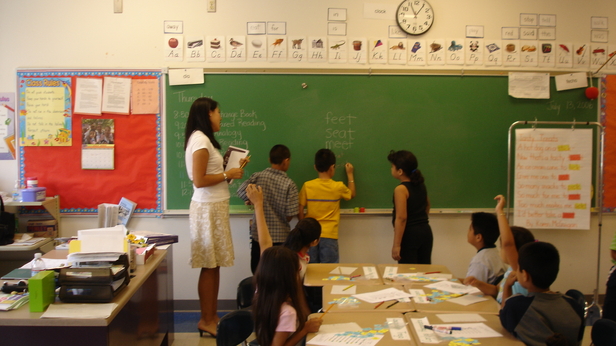
DPI Data Show That Nearly 40,000 Students Were Stuck in Schools That Failed to Meet State Expectations Each Year
by Christian D’Andrea
MacIver Institute Education Policy Analyst
In December, our report showed that chronically failing public schools cost Wisconsin approximately half a billion dollars in 2013-14 alone. A look at every school that earned a “Fails to Meet Expectations” grade on the state’s School Report Cards shows that this spending added up to more than $1.6 billion between 2011 and 2014.

The Department of Public Instruction (DPI) has provided School Report Cards for Wisconsin’s public schools since the 2011-2012 school year. The authority also compiles data on student enrollment in each institution and the average revenue per student in every district in the state. With these data, we were able to come up with an accurate look at how much taxpayer money – from local, state, and federal sources – was spent in the schools that were designated as failing institutions.
The results show that hundreds of millions of dollars were spent in public schools that failed to meet Wisconsin expectations every year. This ranged from a minimum estimate of nearly $485 million in 2012-13 to a maximum of over $600 million in the program’s pilot year. After a year of corrections and a significant decrease in the amount of failing schools two years ago, the concentration of markedly underperforming schools rose last year, leading to more than half a billion dollars spent at these institutions.
In all, these schools inefficiently educated more than 118,000 Badger State students over that three year span. In 2013-14, 4.48 percent of the state’s entire pupil population attended one of these failing schools. The average score for these institutions was just 44.78 points out of 100. An “F” grade is anything under 53 points on the state metric.
However, it’s important to note that this list only includes institutions that earned at least one “F” grade in the past three years. It does not track the schools that raised their grade to leave the lowest grading category in following years or the previous years of schools that fell into the “F” range in 2012-13 or 2013-14.
In all, Milwaukee was home to the vast majority of the state’s underperforming public schools. The city’s traditional public schools, instrumentality charter schools, and non-instrumentality charter schools made up more than 85 percent of Wisconsin’s overall “F” grades between 2011-12 and 2013-14. Racine and Green Bay were the only other habitual offenders on the list.

It should be noted that the final five districts listed in that table have not appeared on the state’s “F” list since the pilot year of the School Report Cards in 2011-12.
Some of these schools are chronic offenders that have levied a huge cost on taxpayers and students. Hamilton High in Milwaukee and Case High in Racine have operated on an estimated revenue of over $140 million in the past three school years. At no point have either of these schools earned even a “Meets Few Expectations” grade from the Department of Public Instruction.

In three years, local, state, and federal tax funds comprised over $1.6 billion in revenue that went to schools that failed to meet Wisconsin’s standards. That’s a tremendous expenditure with little return. More importantly, those three years represent more than 118,000 students that received at least one year of education in a school the state says is inadequate at best and impotent at worst.
That’s a tremendous cost to the state but, more importantly, it is a wasted year for Wisconsin’s K-12 students. These failing schools aren’t just costing the state billions of dollars now – they are building towards exponential losses when these struggling students grow into adulthood. Finding a way to rebuild these schools into productive classrooms isn’t just smart business – it’s also the right thing to do for the Badger State.